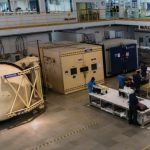Glossary
JIT (Just in Time) Manufacturing
What is Just in Time (JIT)
Just in Time is a system of inventory management where inventory on hand is kept as minimal as possible to meet demand. The primary motive behind JIT is to increase inventory turnover and reduce unnecessary inventory holding costs.
The Just in Time management philosophy requires working closely with suppliers so that businesses schedule production only as needed. Companies maintain optimal levels of stock that help reduce costs in the production process and ensure the manufacture of high-quality products.
The JIT phenomenon traces back to the 1970s. Toyota Motor Corporation pioneered the JIT system to produce according to customer demands while minimizing delays and waste.
The company believed that Toyota could be more proactive in market changes if it had less inventory on hand. Through JIT, they could easily make and change models while creating minimal wastage.
How does JIT work
In a JIT process, manufacturers order raw materials only as needed for production. Unlike the traditional “push” system, where units produced allow the maintenance of inventory levels, the Just in Time system makes only according to demand.
Consistent yet small batches of raw materials ensure that the manufacturer receives only the correct amount for production. This demand “pull” system comprises transportation and production simultaneously.
JIT manufacturing, however, is possible only with the help of an accurate demand planning system coupled with an open, reliable supply chain. It requires your sales forecasts to be updated periodically and reliably to avoid any surplus or stock-outs.
Following are the steps in Just in Time management:
- Order placement: Customer places an order for a product.
- Raw material procurement: The business orders the raw materials required after receiving the order.
- Order fulfillment: The business manufactures the product and sends it to the customer.
Lastly, effective just-in-time processing entails steadfast production, flawless plant and machinery, high-quality labor, and reliable suppliers. Therefore, businesses must maintain the right factors for the effectiveness of this inventory management method.
The Importance of JIT
JIT plays an essential role in business. In such a system, manufacturers must anticipate demand accurately which it fails to in a traditional supply chain model. Without a proper inventory management system, a business may overstock due to false anticipation of customer demand.
On the other hand, insufficient supply may lead to disgruntled customers and an overall bad reputation for your brand. Therefore, both surpluses and overstocking are bad for any business and JIT seems to be the solution to both these problems.
Here are the benefits that implementing JIT can bring to manufacturing firms:
Manufacturer control
The Just in Time model encompasses a demand-pull system of operation. This implies that manufacturers produce goods only when the customers demand them. As a result, manufacturers have complete control over the manufacturing process.
In-demand products can flexibly be increased in supply; those that are slow in production can be slowed down or even halted. Therefore, the just-in-time system gives manufacturers control over changing the production level according to market changes.
Promotes local sourcing
The Just in Time approach to inventory management is a wise way to promote local sourcing. In this method, a manufacturer must source raw materials at the earliest to ensure timely delivery.
Therefore, they would be inclined to source from local suppliers to source raw materials at the earliest. Local suppliers will flourish in regions that practice the just-in-time philosophy.
Less working capital
Just in Time entails procurement of raw materials only as and when needed. Since businesses procure only the necessary stock, it calls for less working capital for the manufacturing process. This decreased working capital means a company can have more funds to invest elsewhere.
Organizations also receive a higher return on investment. Therefore, smaller batches of raw materials are more efficient for businesses according to the JIT philosophy.
Low inventory holding costs
Producing more than demand means that there is more inventory that needs to be stored. This ultimately translates to increased inventory costs. Since warehousing is expensive, JIT allows controlling these costs by only producing as much as required.
Following the JIT model means companies can control their inventory holding costs and improve their margins.
Reduces waste
Traditional supply chain encompasses stock production at set inventory levels. This system often leads to overproduction. Unsold inventor holds unnecessary space and adds to the holding costs.
In contrast, the JIT system demotivates excess stock production, leading to minimal wastage.
Limitations of JIT
While Just in Time brings many advantages to businesses, there are also a few limitations that must be kept in mind:
- Just in Time involves inventory levels in minimal quantities. While this process ensures minimal holding costs, it also means that order reworking is only possible if something in the manufacturing process goes wrong.
- Moreover, JIT involves transporting raw materials from suppliers to the manufacturer and onward to the customers in small batches. While this process controls holding costs and wastage, it significantly adds to fossil fuel expenses.
- A JIT system works in a glitch-free environment. However, in the case of a disruption, a business will be severely impacted because there will be no stock at the backend to sell to customers.
- Lastly, the Just in Time process needs real-time monitoring and control, which is only possible with computer software.
Just in Time inventories can help businesses and manufacturers lower their holding and storage costs. Effective control over these costs can help run enterprises efficiently and effectively.
Learn more
Proactive Intelligence In Manufacturing







